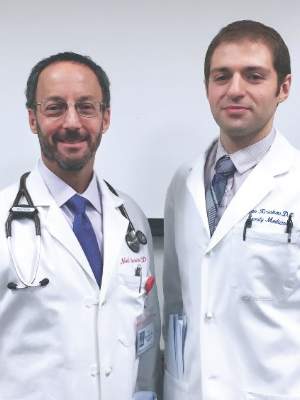Binge drinking is a common problem in adolescents as well as adults. In a 2013 survey, 60 million Americans, representing 22% of the population, 12 years of age and older engaged in binge drinking in the previous month. Among those 12-20 years of age, 14%, or one in seven, reported binge drinking. Depending on the survey, between one-third and one-half of all high school students currently drink alcohol. Among young people who drink, a higher proportion drink heavily than among adult drinkers. For teenagers who drink, 28%-60% report binge drinking. Among high school seniors, 1 in 10 report drinking more than 10 drinks in a row. The predominant liquor consumed by 13- to 20-year-olds is vodka (44% ), whereas beer is consumed by less than one-third of respondents. Underage drinkers typically get alcohol from adults of legal drinking age, and frequently drink in their own home or that of a friend. Clearly, this is an important, underappreciated problem that warrants clinical attention.
Background
Binge drinking is defined by the National Institute on Alcohol Abuse and Alcoholism (NIAAA) as the pattern of drinking required to bring the blood alcohol concentration (BAC) to 0.08% or greater. For adolescents, the required amount of alcohol to achieve the same BAC is thought to be less than the amount required for adults. Binge drinking for adults has traditionally been defined as more than five drinks over a 2-hour period for men or more than four drinks over 2 hours for women. Different cutoffs have been suggested for youth in several studies but were not clearly defined for this analysis.
Implications
Alcohol consumption in adolescents is associated with adverse events, and this is only exacerbated by binge drinking. These events include, but are not limited to, engaging in higher-risk behaviors, such as impaired driving or being the passenger in a vehicle with an impaired driver; an increased risk of suicide or attempted suicide; and an increased risk of nonautomobile accidents that can lead to severe injury or drowning. Adolescents who start drinking before the age of 15 years are four times as likely to develop alcohol dependence as people who start drinking after 20 years of age. In addition, adolescents who engage in binge drinking have an increased rate of high-risk sexual activity, which may result in a sexually transmitted infection as well as an unplanned pregnancy. Adolescents who continue to imbibe during pregnancy risk the development of fetal alcohol spectrum disorder. Finally, adolescent binge drinkers are subject to the immediate effects of alcohol, including hangover, blackout, and alcohol poisoning.
Guidance for the provider
The AAP recommends screening every adolescent for substance abuse, but if time constraints exist, alcohol abuse only ( Pediatrics. 2015;136[3]:e718-2 6). The AAP has set up specific screening questions that are based upon the age group of the patient:
For elementary school students (ages 9-11) the following questions are appropriate:
• Do you have any friends who drank beer, wine, or any alcoholic drink in the past year?
• How about you? Have you ever had more than a few sips of beer, wine, or any drink with alcohol?
For patients in middle school (ages 11-14):
• Do you have any friends who drank beer, wine, or any alcohol-containing drink in the past year?
• How about you? Over the past year, how many days have you had where you’ve had more than a few sips of beer, wine, or any other alcohol?
For patients in high school (ages 14-18):
• Over the past year, how many days have you had where you’ve had more than a few sips of beer, wine, or any other alcohol?
• If your friends drink, how many drinks do they usually drink on an occasion?
The above questions help to risk stratify patients into three groups: low, moderate, and high risk. The guidelines do not make a recommendation on how to use these questions to risk stratify the patients. Low-risk patients receive brief counseling. Moderate-risk patients receive more intensive counseling as well as motivational interviewing. Motivational interviewing delivered over the course of one or more sessions has been found to be effective in reducing consumption of alcohol. Lastly, the high-risk group is given motivational interviewing, as well as possible referral.
The bottom line
Alcohol abuse in adolescents can have significant detrimental effects, both short and long term. The AAP recommends screening every adolescent for alcohol abuse and, if time permits, for other drug abuse as well, in order to prevent the morbidity and mortality associated with these substances. Interventions can range from brief counseling to motivational interviewing of adolescents at risk and finally referral to substance abuse specialists in the highest-risk groups
Dr. Skolnik is associate director of the family medicine residency program at Abington (Pa.) Memorial Hospital and professor of family and community medicine at Temple University in Philadelphia. Dr. Kiriakov is a second-year resident in the Abington-Jefferson Family Medicine Residency Program in Abington.






